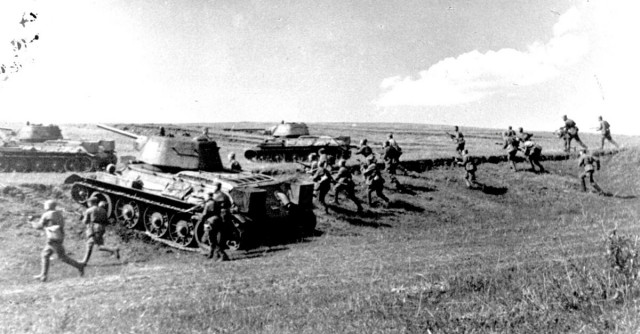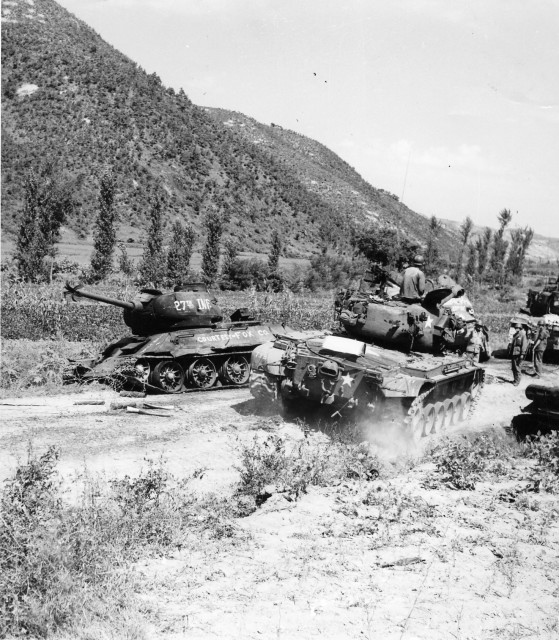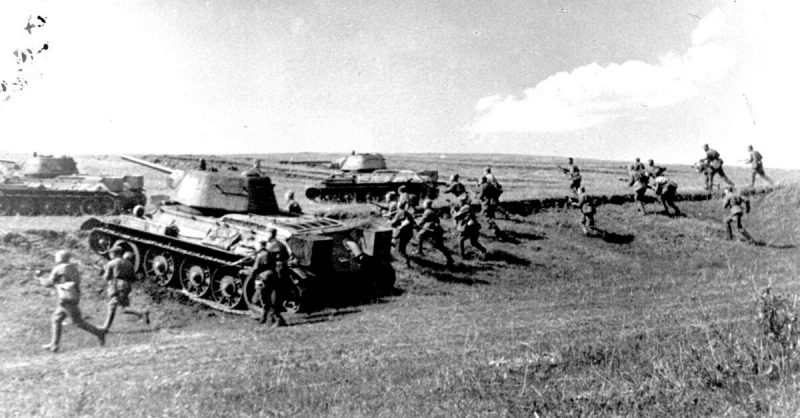
Although built in the Soviet era when military construction had top priority, the T-34 was an outstanding tank by any standards.
Not only was it tough and simple to operate (so long as you were strong yourself), it was built in prodigious numbers. During the war about 65,000 of both models, the T-34/76 and T-34/85, were built and effectively outnumbered any other type of tank built anywhere in the world.
The T-34 had some interesting features. It was powered by a rugged V-12 diesel engine rated at 450 hp and ran on a toughened up version of the American Christie suspension. But the thing most people talk about in respect of the T-34 is its sloped armour which, in theory, renders armour that much thicker and encourages incoming rounds to be deflected.
One thing that will strike you if you look closely at a T-34 is the crudity of the welding where the armour plates join, and the rough finish of the castings on the turret, for instance. This has led many people to denigrate Russian workmanship although in fact, where a close fit and good surfaces matter, it is just as good as anywhere else. The difference is that the Russians were not interested in a smart external finish for their tanks. They simply wanted to win a war with them.
Another thing you should notice on the T-34 is how far forward the turret is. It comes up virtually to the top edge of the glacis plate and leaves no room at all for hatches above the heads of the driver and hull machine-gunner, such as you will find on most other tanks.

Instead the two men who occupy the front of the hull are expected to enter through a large hatch in the sloping front plate of the hull. This not only leads to a very undignified method of getting in, it also means that it is a lot more dangerous getting out in a hurry in the face of the enemy.
Incidentally, the opening in the front of the hull is not a very good idea, even if it is covered by a heavily armoured hatch. It spoils the integrity of the armour on the hull front.
Inside, the tank is spartan indeed. There are very few padded areas to protect the heads of the crew. Rather each man, or sometimes woman in this case, is given a padded hat to wear. Most of the ammunition for the main armament is kept in steel boxes which form the floor of the tank so after an intense action, when many of these are empty, the floor itself becomes quite uneven.
On the other hand, towards the end of 1943 a new version of the T-34 fitted with a powerful 85mm gun was ready to enter service. The new gun required an enlarged turret which in turn enabled an extra crew member to be included. Now at least the tank commander did not also have to load the gun, as he did in the T-34/76. This gave the tank the firepower to match some of the later German tanks, which it already outnumbered anyway.
by David Fletcher / The Tank Museum
A message from the Tank Museum:
“Please Support Us: As a charity, we rely on public support for all our activities. Our work is funded entirely by people like you. With your support, we can continue to create content. With the right support we might be able to do it more regularly – and can be even more ambitious. Please Click on the Banner Below”

